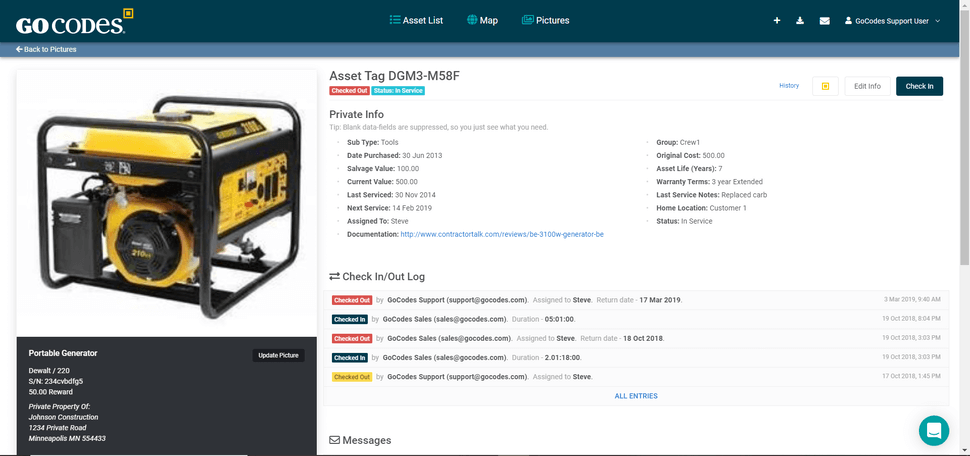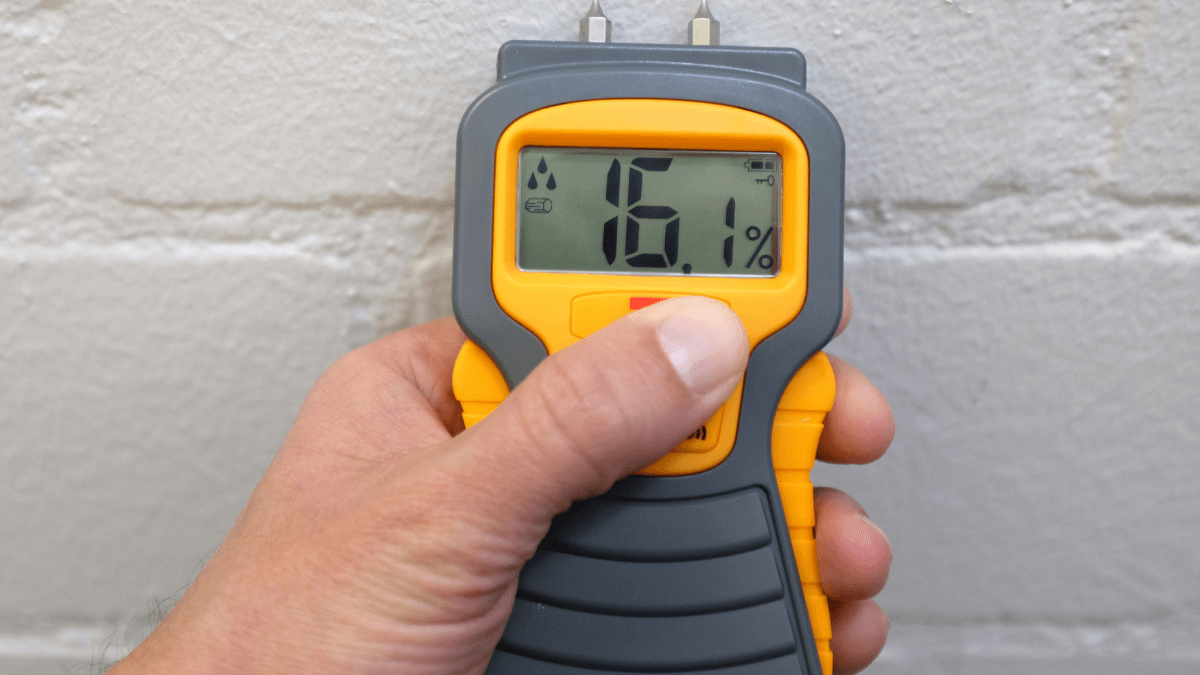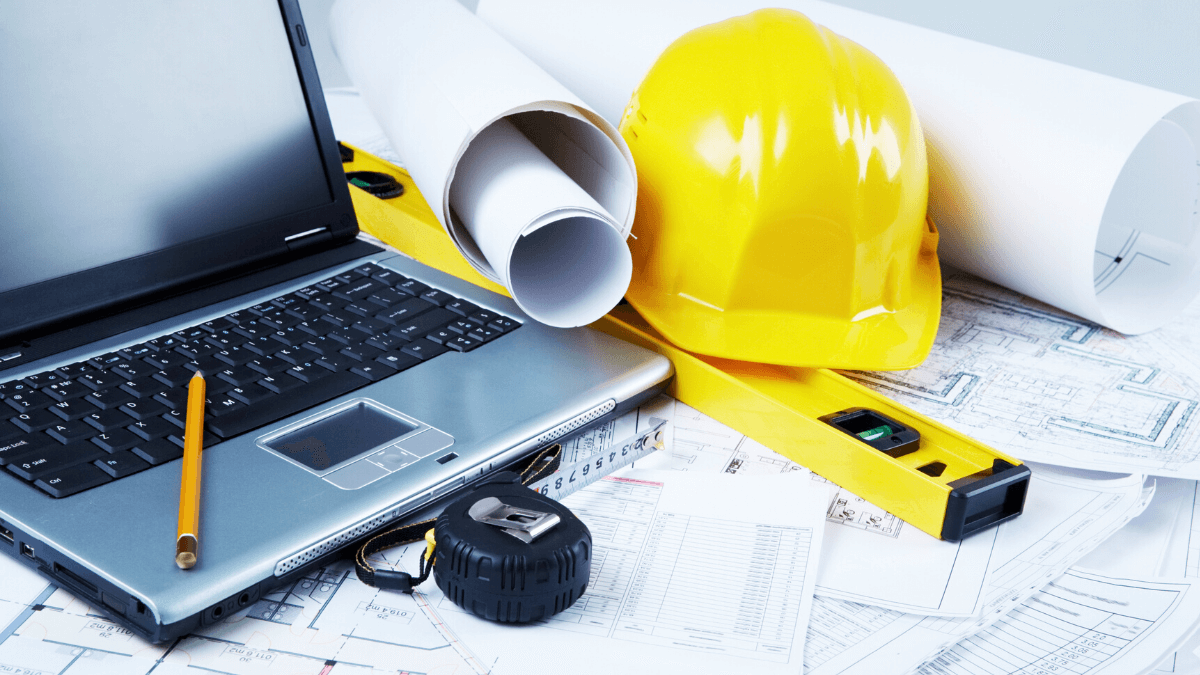Mold remediation makes sure that the mold levels are back to normal and that it’s safe for people to be in the area.
While many stores sell DIY kits for mold removal, it’s not as easy as it seems, so people opt for calling professionals.
To be as effective as possible at mold remediation, you should use quality equipment that will help you increase the level of airflow and get rid of excess moisture before removing the mold-infested area.
Keep reading to determine which equipment is considered a must-have in the mold remediation business and how you can be even more effective at mold remediation equipment management!
In this article...
List of Essential Mold Remediation Equipment
The mold remediation process eliminates excess moisture and moldy surfaces on the property.
Before removing mold, you should focus on changing the humidity levels that let it grow and spread. Once humidity levels are back to normal, you can remove the already existing mold, assured that it will not grow again.
These are the essential tools every mold remediation professional should own.
Air Movers
You can eliminate mold by causing air to flow in the infected area, which removes the conditions mold needs to grow.
An excellent tool for airflow increase is an air mover—an industrial blower that you need to place in the infected area in a way that improves airflow and lets the room dry out quicker by speeding up evaporation.
A significant benefit of this tool is that maintenance is easy, and you don’t have to schedule it often, making it cost-effective and reliable.
You should pay attention to keeping the tool clean and not dipping it in water for your own and the equipment’s safety.
Professionals should have more air movers based on the size, as larger areas need more robust and bigger tools. Having more of them allows you to pick which one you will go out to the field with, as you can easily carry some around.
If you’re in the field due to a water leak, you can use an air mover right away to prevent mold from happening.
Air movers will help you dry out the room before mold gets the chance to grow in the new, more humid environment.
The tool will help you eliminate the humidity and stop the mold from spreading if it has already developed.
When dealing with a highly humid place, you should use a dehumidifier before using an air mover as excess moisture can damage it.
Dehumidifiers
Dehumidifiers help you cool the air, thus removing excess moisture that allows mold growth.
When you’re dealing with a very humid area, you should first use a dehumidifier to cool down the room. The cool air will bring down moisture levels since it can hold less moisture than warm air.
The three most common types of dehumidifiers are mechanical, electronic, or absorption dehumidifiers.
A mechanical one catches and traps the humidity in a special container while simultaneously chilling the room.
The byproduct is called gray water, and you shouldn’t just throw it away—consult national laws and regulations as it can contaminate the area you throw it away in.
The absorption type uses a drying agent such as silica gel to dry out the room, while the electronic version relies on a pump to bring the moisture out of the air, creating condensation.
Consider the size of the infected area when choosing the right dehumidifier—the bigger the site, the stronger tool you need.
There are many types of dehumidifiers for sale, but only high-quality professional ones can lower the humidity levels to 40%, which is in the desired 30% to 50% range.
What does a humidity level even represent?
If it is at 40%, it means that the air is carrying less than half of its total humidity capacity. If the air holds more than half of its capacity, a result of it is mold growth.
Choose a dehumidifier that will efficiently bring the moisture levels down to below 50%.
Air Scrubbers
Use HEPA filter air scrubbers to remove any kind of mold particles from the air.
While the previous two tools focus on removing excess moisture from the air, air scrubbers remove contaminants. Mold releases spores that are everywhere around us. When they land on wet areas, they can grow into mold, especially when the humidity levels are over 50%.
Professional air scrubbers use high-efficiency particulate air (HEPA) filters to trap different contaminants, including mold.
These filters contain fiberglass or similar sorts of material that hold onto particles as small as 0.3-microns, making them highly effective in getting rid of spores during mold remediation.
Some air scrubbers have two filters—the first one for bigger particles and the second HEPA filter. This way, the bigger particles will get caught in the first filter, and the HEPA filter fulfills its original purpose of trapping the smallest particles.
Such equipment is usually easy to maintain as all you need to take care of are the filters. You should change them after every use, depending on the size of the area and the duration of use.
Even though frequent changes might cost more, they eliminate the risk of cross-contamination and help your tool be as productive as possible.
Most modern dehumidifiers have an indicating light that alerts you when there’s a need for a filter change, making it even easier.
Professional air scrubbers guarantee that you will trap and eliminate even the smallest contaminants.
Moisture Meters
If you want to be sure that a material is at an average moisture level, use a moisture meter.
Humidity meters determine the level of moisture of specific material like dry wood or concrete. Such measurements are crucial in mold testing and remediation as they let you know how moist a surface is.
When dampness levels are higher than average, there is a higher chance of mold growth and even material decomposition in some instances. For example, such levels for softwood are all over 17%.

Humidity meters widely help mold testing as humidity levels let you know whether the circumstances are suitable for the mold to grow, but they are also valuable for remediation.
After you get rid of the source of excess moisture, you should perform another check with a moisture meter to determine how successful your method was.
This way, you’ll know if you need to do another round of dehumidifying to get the levels back to normal or if your effort paid off the first time.
There are two types of moisture meters—pin or pinless.
The difference is that the pin option has two pins that need to be inserted into the material to measure its humidity, damaging it in the process.
In contrast, the pinless version only needs to be pressed against the material to scan it for moisture.
If you want to check the moisture level after your efforts to bring them down to normal, use a moisture meter to read the humidity level instantly.
Cleaning Products
After the humidity levels are back to normal, you need to clean and disinfect the moldy area to remove the visible mold.
Once you’ve altered the environment that helped mold grow and therefore stopped it from spreading further, it’s time to eliminate it.
While many non-professionals use bleach for this purpose, mold experts steer clear from it as it can pose a threat to humans while being less effective than more natural solutions. Some prefer it because of its bleaching properties, but the risk is higher than the reward.
Biocides such as detergent are a better option as they are less intrusive. On the other hand, biocides are water-based, which means that they will reintroduce water to the previously infected material, thus bringing more moisture.
You need to properly dispose of everything that the property owners want to throw away because of mold infestation. However, you should use borax and detergent to clean areas that will not be removed and thrown away.
When dealing with wood, select a dishwashing detergent and scrub the air with a bristle brush. After that, you can use a borax product to protect the wood from mold. You can use a wire brush and essential disinfectant wipes before scrubbing the area with detergent and a wet cloth for other materials.
In general, after cleaning the area with a non-invasive product, seal or encapsulate the surface to prevent mold from growing there again.
Choose effective, non-invasive cleaning products to clean up mold after you’ve eliminated excess moisture.
Personal Protective Equipment (PPE)
PPE is obligatory for any type of professional mold work as it protects you from possibly toxic fungus.
When you go out in the field to bring mold levels down to normal, you need to protect yourself from it and other possible issues you can find in old houses, such as lead paint and asbestos.
If you’re protected, you can do your job quickly and efficiently without having to risk your health or stop the project in the middle when discovering a potential threat.
The most basic PPE kit for mold workers includes respiratory protection such as masks, eye protection, and gloves.
If the moldy area is more extensive, you should use protective, breathable suits and cover your face and hands.
Masks can be disposable, but you can invest in reusable respirators for your team, depending on your preference. Either way, make sure to purchase quality equipment that will guarantee protection from mold.
A good choice is an air-purifying mask that filters mold and other dangerous particles.
Safety goggles are usually reusable, so it’s wise to buy ones that will last for a long time while protecting you not only from spores but from any kind of debris that might get in your eyes as you’re working on remediation.
You need to dispose of gloves after use or after damage, so ensure plenty of stock for your team.
Protective clothing can also be disposable, which means you should throw it away after use. In the case of reusable clothing, make sure to remove it, place it in a secure container, and decontaminate it.
Don’t leave your place of work wearing protective clothing as you might carry spores around.
If you want to stay safe in the field, use protective equipment and ensure enough stock for everyone.
How to Keep Track of All Your Mold Remediation Equipment
We’ve listed the most common mold remediation equipment that you will use while on the field. If you’re a big company, you will have more than one piece of each tool.
In the case of disposable PPE, it’s better to buy in bulk to ensure ample quantities.
Because of these large quantities, you need to find a system to manage your inventory efficiently, meaning that you know how many tools and PPE you have, where they are, how many of them are being used or need repair or maintenance.
Without an adequate system, this would be practically impossible.
We suggest using apps or software like GoCodes, which has proved efficient in providing cloud-based inventory management while letting you track your equipment.
After you tag the equipment with a QR code, your workers need to scan the code when checking it in and out, thus letting everyone else know that the tool is or isn’t free to use.
GoCodes allows you to reserve a tool for when you need it, reminds you of maintenance dates, and lets workers update the tool’s status if it needs a repair.

These options ensure that you always know where the tool is, in which state, and who is responsible for it. This data will help you schedule future projects and decide on future purchases.
If you see that a tool is often reserved in advance, it might be a good idea to invest in another one so that you can double your productivity.
Consider using software that lets you track your tool, its usage, and current state, allowing you to be more efficient.
Conclusion
The first step of mold remediation is to bring moisture levels below 50% to prevent mold from spreading.
Equipment that can help you do this are air movers, dehumidifiers, and air scrubbers.
After remediation, you should use a moisture meter to measure how effective the process was—there is no use in going further with the process if the moisture is not back to normal levels.
Once you’re sure that moisture isn’t an issue, use cleaning products to remove the remaining mold by wiping and disinfecting the area.
To always stay on top of your equipment and know when each piece is available, use software to track it.





